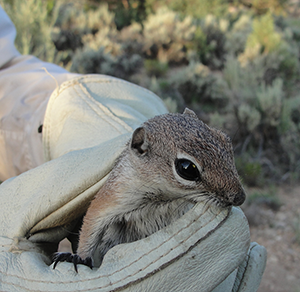Grand Canyon Region
The Grand Canyon region is unique and complex in terms of its geology, hydrology, and ecology:
- Located within the arid and sparsely vegetated southwest portion of the Colorado Plateau and characterized by a terrain of broad plateaus, ancient volcanic mountains, and deeply dissected canyons 1 .
- Contains a wide variety of habitats, which support diverse animals and plants, including threatened and endangered species as well as those that are culturally significant.
- Considered an important migration and foraging corridor for various species including pronghorn, mountain lion, elk, mule deer, black bear, northern goshawk, and neotropical migratory birds, especially in areas like the Kaibab National Forest
- Restoring the ecology of the region is a slow process: physical disturbances of habitats in this arid environment do not recover quickly and may require long-term restoration commitments from management agencies.
Springs in the area support some of the most diverse habitat of the Colorado Plateau and are a critical source of water for humans, fish, and wildlife. Species diversity in these spring habitats is 100 to 500 times greater than that of the surrounding landscape2. Many of the seeps and springs in the Grand Canyon region emerge from the base of rock layers formed from dissolution of limestone from groundwater flow through joints and fractures which causes caves, caverns, and solution channels.
- Geologic structures, such as joints, fractures, faults, folds, and bedding planes, control and direct the flow of groundwater movement toward spring discharge areas.
- Fine-grained sedimentary rocks can inhibit the downward movement of groundwater, resulting in locally perched water-bearing zones, located several hundred to more than 2,000 feet above the underlying regional aquifers.
- Fractures and faults in the fine-grained rock units provide pathways for vertical movement of water from the surface and groundwater from the perched water-bearing zones deeper into the subsurface.
- The collapse of some of these caves and caverns over time has led to the formation of breccia pipes,
some of which host uranium ore deposits.
Sources:
1
Beus and Morales, 2003, Grand Canyon Geology: Oxford University Press, 432 p.
2
Grand Canyon National Wildlands Council, 2004, Biological inventory and assessment of ten South Rim springs in Grand Canyon National Park—final report: National Park Service Report.
